Nishith Chennakeshava
Ultrasound Signal Processing: From Models to Deep Learning
Apr 09, 2022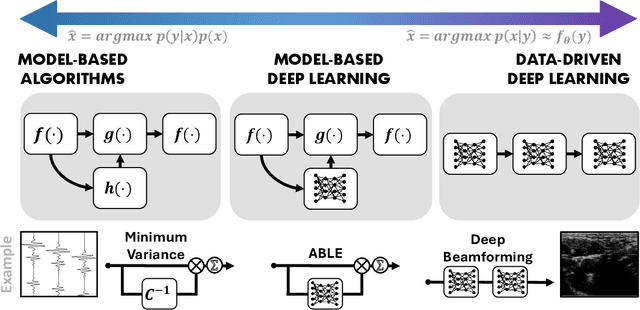
Abstract:Medical ultrasound imaging relies heavily on high-quality signal processing algorithms to provide reliable and interpretable image reconstructions. Hand-crafted reconstruction methods, often based on approximations of the underlying measurement model, are useful in practice, but notoriously fall behind in terms of image quality. More sophisticated solutions, based on statistical modelling, careful parameter tuning, or through increased model complexity, can be sensitive to different environments. Recently, deep learning based methods have gained popularity, which are optimized in a data-driven fashion. These model-agnostic methods often rely on generic model structures, and require vast training data to converge to a robust solution. A relatively new paradigm combines the power of the two: leveraging data-driven deep learning, as well as exploiting domain knowledge. These model-based solutions yield high robustness, and require less trainable parameters and training data than conventional neural networks. In this work we provide an overview of these methods from the recent literature, and discuss a wide variety of ultrasound applications. We aim to inspire the reader to further research in this area, and to address the opportunities within the field of ultrasound signal processing. We conclude with a future perspective on these model-based deep learning techniques for medical ultrasound applications.
Accelerated Intravascular Ultrasound Imaging using Deep Reinforcement Learning
Jan 24, 2022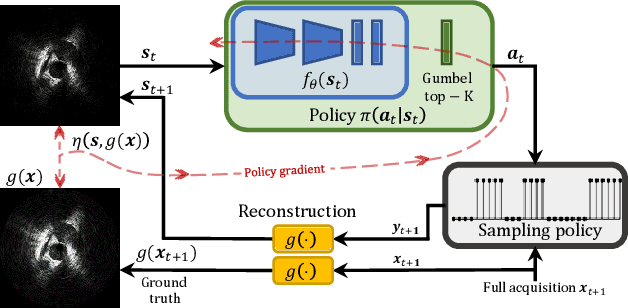
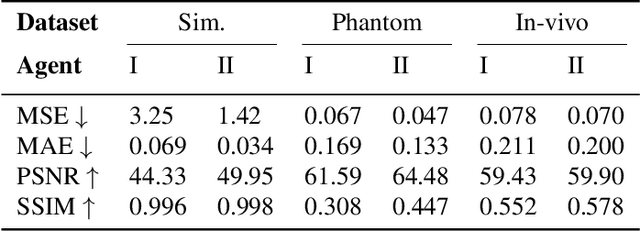
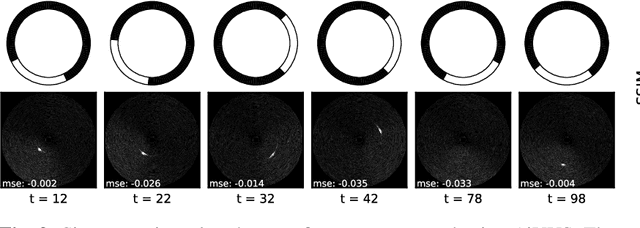
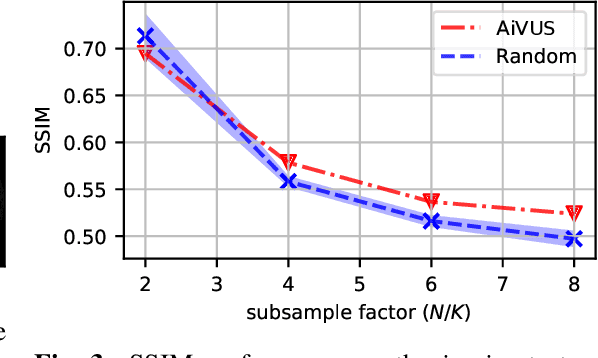
Abstract:Intravascular ultrasound (IVUS) offers a unique perspective in the treatment of vascular diseases by creating a sequence of ultrasound-slices acquired from within the vessel. However, unlike conventional hand-held ultrasound, the thin catheter only provides room for a small number of physical channels for signal transfer from a transducer-array at the tip. For continued improvement of image quality and frame rate, we present the use of deep reinforcement learning to deal with the current physical information bottleneck. Valuable inspiration has come from the field of magnetic resonance imaging (MRI), where learned acquisition schemes have brought significant acceleration in image acquisition at competing image quality. To efficiently accelerate IVUS imaging, we propose a framework that utilizes deep reinforcement learning for an optimal adaptive acquisition policy on a per-frame basis enabled by actor-critic methods and Gumbel top-$K$ sampling.
* 5 pages, 3 figures, conference
Deep Proximal Learning for High-Resolution Plane Wave Compounding
Dec 23, 2021
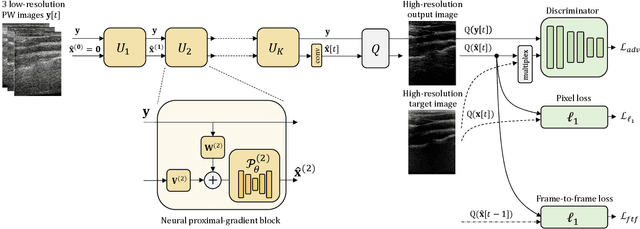

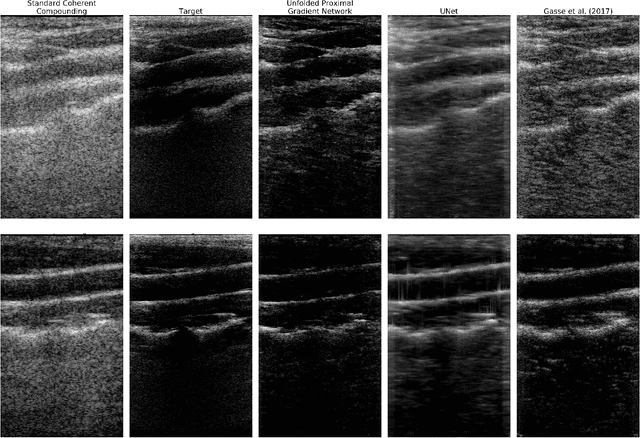
Abstract:Plane Wave imaging enables many applications that require high frame rates, including localisation microscopy, shear wave elastography, and ultra-sensitive Doppler. To alleviate the degradation of image quality with respect to conventional focused acquisition, typically, multiple acquisitions from distinctly steered plane waves are coherently (i.e. after time-of-flight correction) compounded into a single image. This poses a trade-off between image quality and achievable frame-rate. To that end, we propose a new deep learning approach, derived by formulating plane wave compounding as a linear inverse problem, that attains high resolution, high-contrast images from just 3 plane wave transmissions. Our solution unfolds the iterations of a proximal gradient descent algorithm as a deep network, thereby directly exploiting the physics-based generative acquisition model into the neural network design. We train our network in a greedy manner, i.e. layer-by-layer, using a combination of pixel, temporal, and distribution (adversarial) losses to achieve both perceptual fidelity and data consistency. Through the strong model-based inductive bias, the proposed architecture outperforms several standard benchmark architectures in terms of image quality, with a low computational and memory footprint.
 Add to Chrome
Add to Chrome Add to Firefox
Add to Firefox Add to Edge
Add to Edge